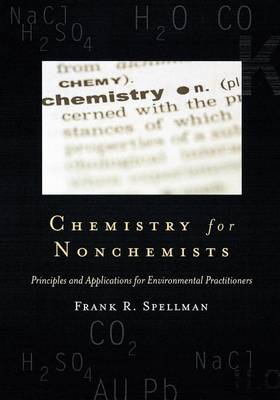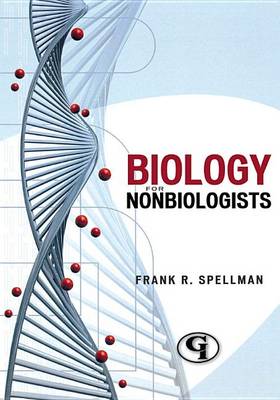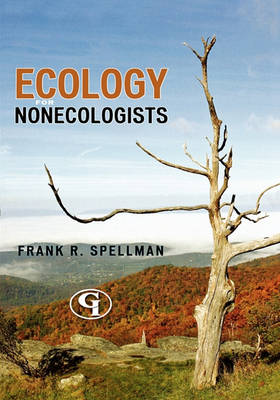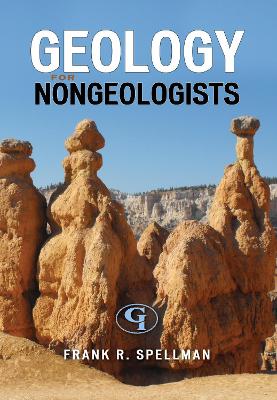Science for Nonscientists
7 primary works
Book 1
To effectively deal with any chemical-based problem, including pollution, environmental, health and safety professionals must have at least a rudimentary understanding of the basic concepts of chemistry. This book provides such professionals with an introductory reference that will help them to understand the fundamental principles of chemistry and to understand those principles as they apply to the environmental compliance programs that regulate workplace activity. Written for anyone whose work involves environmental management, planning, impact assessment, protection, or compliance, or whose responsibilities include designing, implementing, and evaluating a health and safety program, Chemistry for Nonchemists provides a detailed overview of chemistry and its principles, chemical nomenclature, chemical reactions, and their application to regulatory compliance programs under the various environmental, health and safety laws. This book will help readers understand the "laws" of chemistry and the ramifications of out-of-control chemistry. The book begins with a review of the periodic table, a look at chemical structure and bonding, and an explanation of key terms. The author, a 35-year environmental veteran, then focuses on the fundamentals of organic and inorganic chemistry, the chemistry of water, and chemical reactions as they apply to environmental compliance programs. From there, he moves to more advanced discussions of solvents and solutes and concludes with in-depth examinations of advanced sampling and analysis, the complex reactions of metals, and chemistry's role in risk assessment.
Book 2
The list keeps growing! The latest in Government Institutes' "non-specialist" series, Biology for Nonbiologists continues the tradition established by Toxicology for Non-Toxicologists and Chemistry for Nonchemists, by providing environmental and occupational-safety-and-health practitioners and students with a comprehensive overview of the principles and concepts of modern biology. Covering everything from basic chemistry principles and the consequences of biology's interaction with the environment to basic biological principles and applications, this convenient handbook provides a quick course on the science of biology. You'll gain an understanding of and skill in biological principles and learn key biology concepts, concerns, and practices without spending weeks in a classroom. Biology for Nonbiologists focuses on three areas: environmental biology and ecology as they apply to environmental regulatory compliance programs, human biology, and community and ecosystem dynamics. However, it also covers all major biological themes, including the cellular basis for life, the interactions of organisms, and the evolutionary process of all beings. The author explains scientific concepts with little reference to mathematics and physical science and little technical language, making the text easier to understand and more engaging for non-science readers. To further demystify the science, Spellman also lists and defines essential biology terms and terms not often used in the environmental and safety fields. Special study aids, including end-of-chapter reviews and checkmarks that highlight important points, enhance learning and allow readers to evaluate their understanding of the concepts presented.
Book 4
Written for anyone who works with chemicals or has a general interest in ecology, this book examines the interrelationship of life forms in our environment and provides straightforward explanations about the complicated interactions among nature and humans. Emphasizing basic concepts, definitions, and descriptions, the author presents illustrative problems in terms of commonly used ecological parameters to provide readers with enough information to make technical and personal decisions about ecology.
Book 5
Environmental professionals who look beyond their specialties and acquire knowledge in a variety of sciences not only make solving on-the-job problems easier for themselves, but they also increase their employment opportunities. This fifth book in the "non-specialist" series provides both professionals and students with a clear, concise overview of the most important aspects of physics in a way that anyone, even those who have never taken a formal physics course, can relate to. Starting with the basic principles of measurement, conversion factors, and math operations, the author explores the topics of motion and force, work and energy, gravity, atoms, heat, sound, light and color, and basic electricity. Each chapter examines the jargon, concepts, key concerns, and applications of physics in action and ends with a chapter review test.
Book 6
Geology for Nongeologists introduces basic concepts in geology: how rocks, minerals, and fossils are classified, how wind, ice, and water have shaped the earth, how mountains are formed, and how volcanoes, geysers, earthquakes, glaciers, and groundwater work to modify the physical structure of Earth. Primarily designed as an information source, and intended to be a non-technical survey for those with little background in science, this book is presented in a reader-friendly style. Written in straightforward and accessible English, this book provides a broad look at a multidisciplinary field that incorporates aspects of biology, chemistry, physics, ecology, geography, meteorology, pedology, and many other areas of science. This book fills the gap between general introductory science texts and advanced environmental science books. Books on the subject are typically geared toward professionals in these fields. This makes undertaking a study of geology daunting to those without a specific background in science. However, this complexity also indicates geology's broad impact. Because geology so widely affects us, sometimes in profound ways, it is important to understand its basic concepts. This book presents information that everyone needs to know about geology and about how science and scientists work. The author uses illustrative problems in terms of commonly used geological parameters, and each chapter ends with a chapter review test. Readers discover a new appreciation for their surroundings and a broader outlook on their environment.
Book 7
Geography is a multidisciplinary field which looks at both physical and social aspects of the world. The broad scope of the field makes it a daunting area for those who do not have a specific background in it. Geography for Non-Geographers thus introduces readers to the most important aspects of geography and how they affect us. It covers all areas of geography, from physical geography to climate and weather to human and cultural geography. Geography for Non-Geographers is presented in an accessible and straightforward manner, explaining scientific concepts in the most basic way possible. Along with basic geographical principles, the text provides a clear, concise presentation of the consequences of the physical interactions with the environment we inhabit. Each chapter ends with a chapter review test to help evaluate mastery of the concepts presented. Readers acquire an understanding of and skill in geographical principles, adding a critical component to their professional knowledge.
Book 8
Today, only a few people outside of the scientific community are conversant with the tradition of science and its many breakthroughs. The rest are scientifically illiterate. So say Frank R. Spellman and Joni Price-Bayer, authors of In Defense of Science: Why Scientific Literacy Matters. This book explains why ordinary citizens need to have an understanding of science, its methods, and its groundbreaking discoveries. The authors introduce the most basic scientific concepts in accessible and straightforward language. Along the way they debunk several misconceptions of science and scientists, and arrive at a view of science as an integral part of society, policy, and everyday life. The book begins with an introduction to science and its basic concepts, including a brief and entertaining history of science and scientific discoveries, before taking on current views of science in society. It surveys the many sources of our ideas of science, including pop culture, classics of literature, news media, and political discourse. Much of the information from these sources tends to mislead, and the only way to guard against such misinformation is to become scientifically literate, and promote scientific literacy in society. The book therefore delves into the reasons that so many people do not understand basic scientific principles and do not keep up with scientific breakthroughs, and finishes by examining the current state of science education. It includes many resources for further reading, and is presented in an engaging and entertaining way. It offers much food for thought for anyone concerned with science in today's world.






